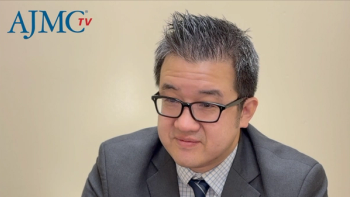
Opinion|Videos|June 15, 2024
Multiple Sclerosis: Impact, Types, Pathophysiology, and Progression
Heidi Crayton, MD, and Maria Lopes, MD, discuss the impact of multiple sclerosis on patients, families, and caregivers, differentiate relapsing forms (relapsing-remitting and primary progressive) from non-relapsing forms (non-relapsing secondary progressive) in clinical practice, and highlight the key pathophysiological features of relapsing multiple sclerosis and the impact of progression independent of relapse activity (PIRA) after an initial demyelinating event.
Advertisement
Episodes in this series

- Patients with MS typically experience significant clinical impact. How does the disease impact patients, as well as their families and other caregivers?
- How are relapsing forms of MS (eg, RELAPSING MULTIPLE SCLEROSIS, PRIMARY PROGRESSIVE MULTIPLE SCLEROSIS) differentiated in clinical practice from non-relapsing forms (non-relapsing secondary progressive multiple sclerosis)?
- What are the key features of the pathophysiology of RELAPSING MULTIPLE SCLEROSIS and the impact of progression independent of relapse activity (PIRA) after a first demyelinating
event ? - What are the hallmark features of non-relapsing secondary progressive multiple sclerosis and what is the prevalence of non-relapsing secondary progressive multiple sclerosis seen in clinical practice?
Newsletter
Stay ahead of policy, cost, and value—subscribe to AJMC for expert insights at the intersection of clinical care and health economics.
Advertisement
Latest CME
Advertisement
Advertisement
Trending on AJMC
1
Bills to Address Expiring ACA Subsidies Fail to Pass Senate
2
Clascoterone 5% Delivers Strong Phase 3 Results for Androgenetic Alopecia
3
Pirtobrutinib Outperforms Bendamustine-Rituximab in Frontline CLL/SLL
4
In CLL, New Therapies Offer Potential for Personalized Approaches
5











































